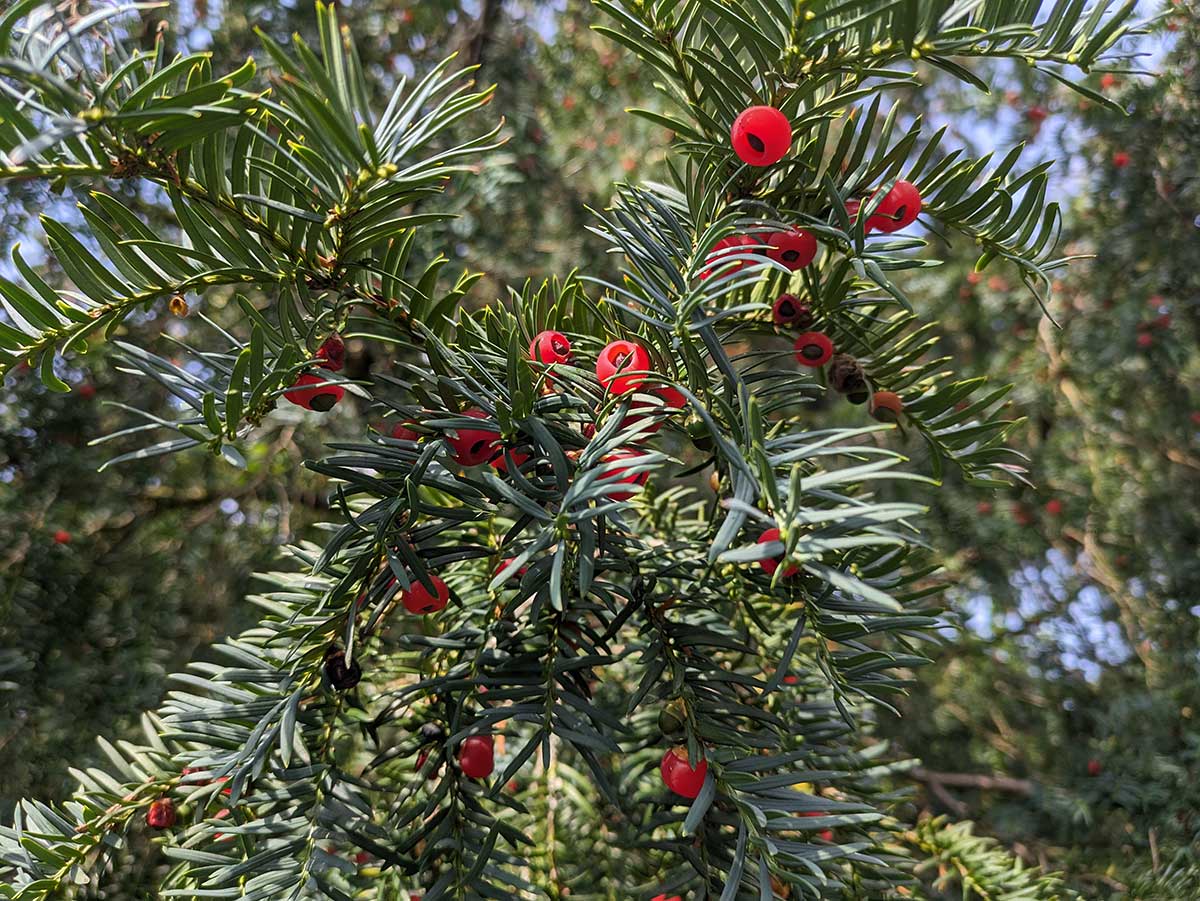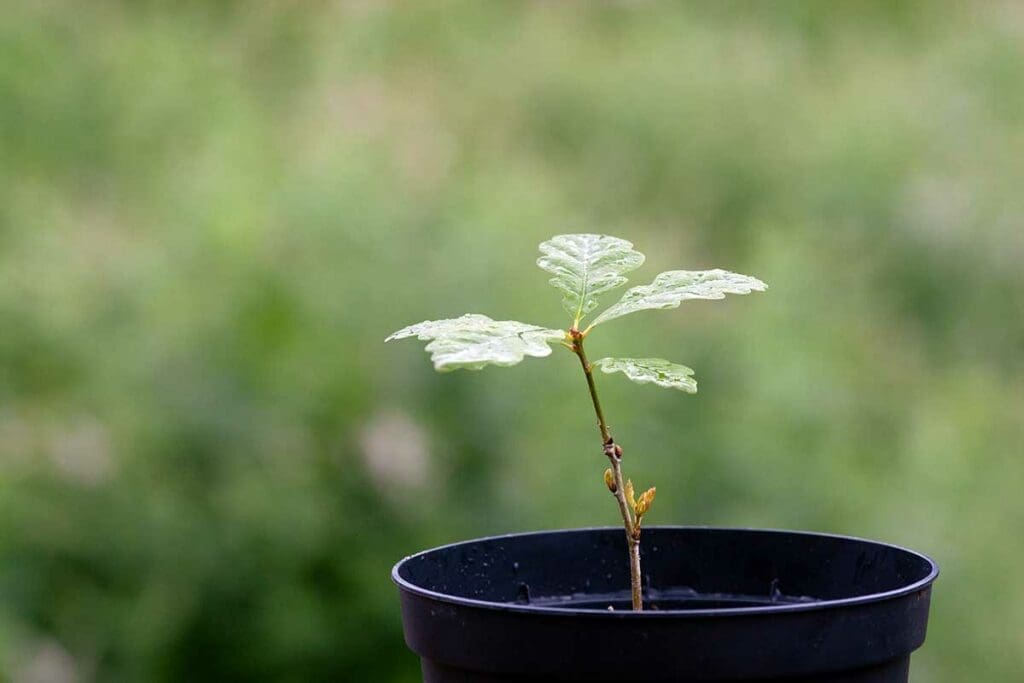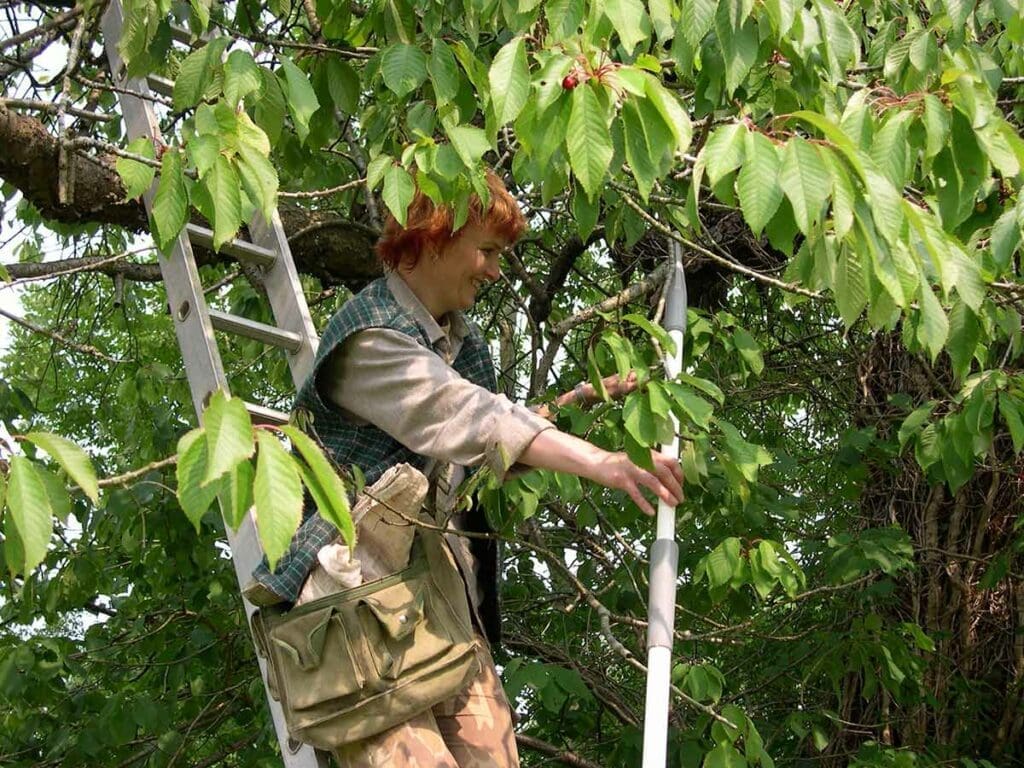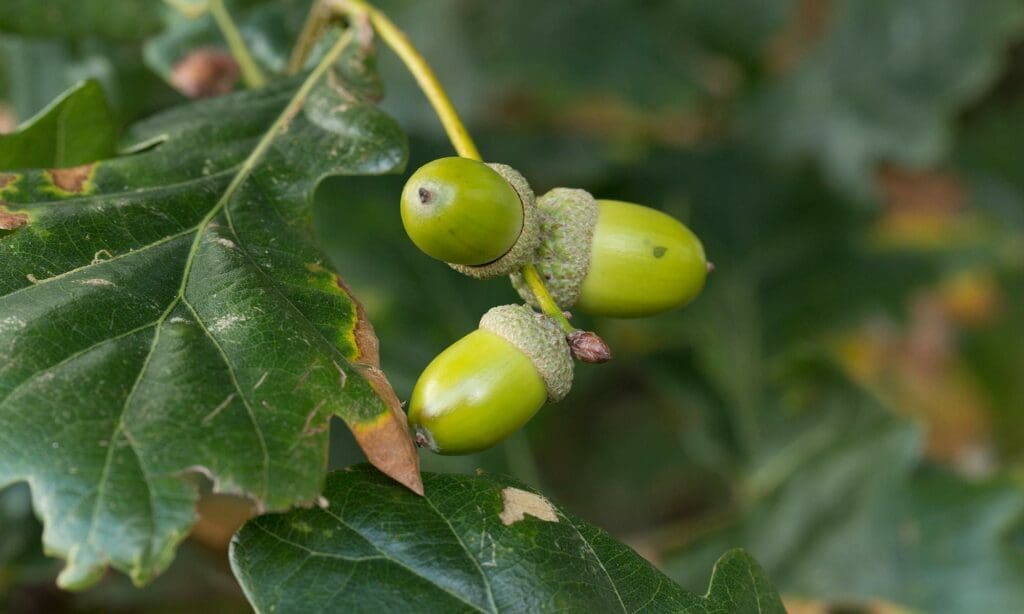Picking yew berries
Yew berries ripen to a vibrant red in late summer and early autumn. They are ready to pick at this point.
The berries are extremely ‘gloopy’ and sticky when squashed – not like most other berries of our native trees. The seed is poisonous if eaten! Always wash your hands after handling yew seeds.
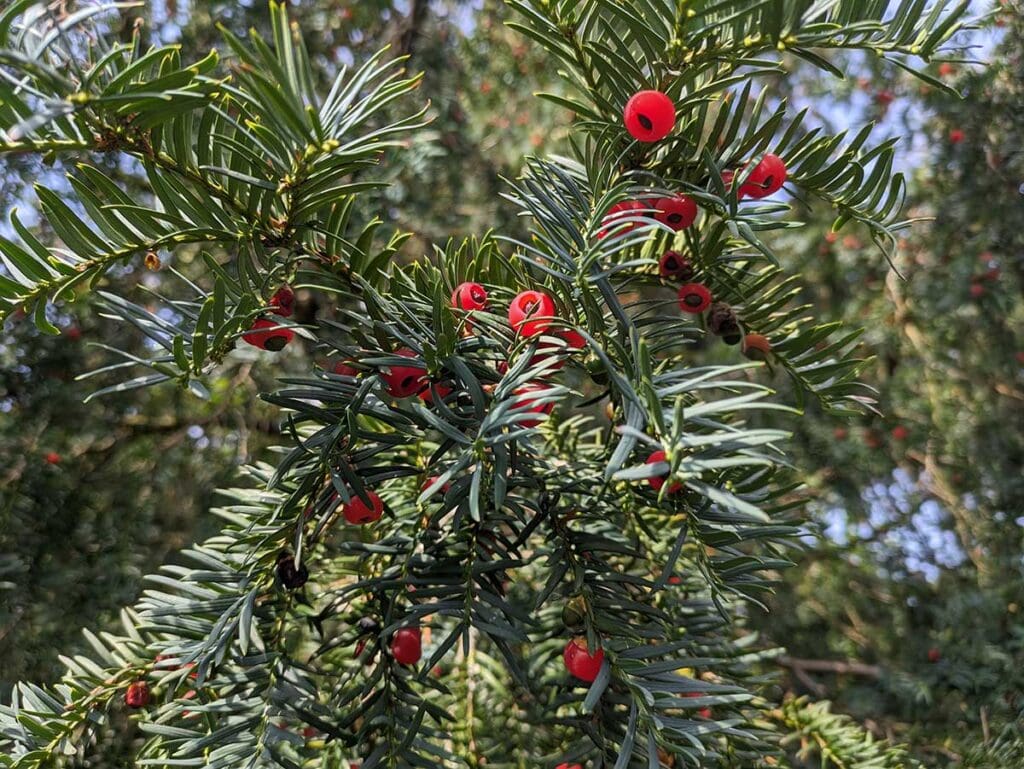
Extraction and storage
Keep the collected seeds in a cool place, in cotton or hessian bags, or in trays in shallow layers.
The single seed in each berry comes away very easily from the flesh. If you only have small amounts, gently squashing them in a bucket or even between your fingers is fine. Remember to wash hands afterwards!
Wash away most of the flesh and sieve off the water to reveal your new bounty.
Pretreatment
Yew seeds are very dormant. It can take a couple of winters of pretreatment to get your seeds to germinate.
Mix the seeds with a moist 50:50 mix of sharp sand/compost and place in suitable containers – two-litre plant pots are fine. Place these outside in a shady spot and leave them. Leave them for two winters and sow in the spring after the second winter. You may find they need three winters!
To avoid missing out on the seeds that need that additional winter, you can empty out your container in spring and only sow the seed that show signs of germination. Put the rest back and wait another year.
Sowing
Yew is often best grown in containers, although they transplant well enough as bare-root plants.
Pop single seeds into individual roottrainers or tall pots, or sow in a seedbed. Cover the seed with 2cm of grit and press gently to ensure good contact with the soil.
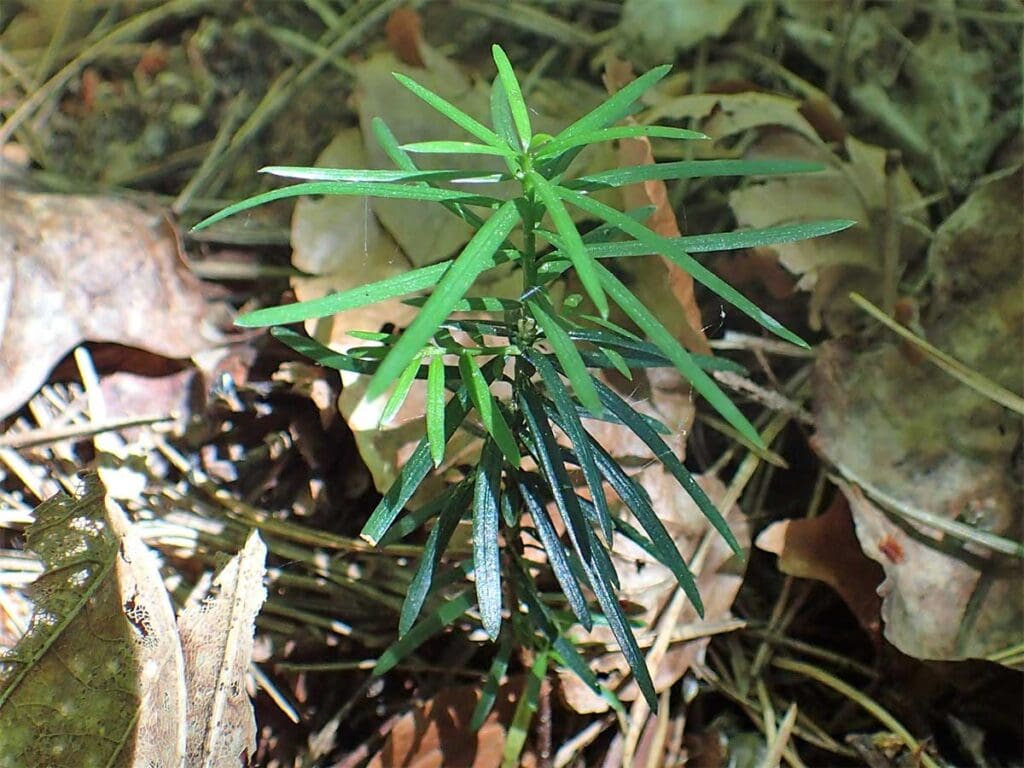
Watering
Careful watering is needed for container-grown plants. In the ground, young seedling can often take care of themselves.
The critical time is between sowing and the seedling getting itself established. Watering may be needed quite regularly, especially in dry weather. Providing some shade can help reduce the need for watering.
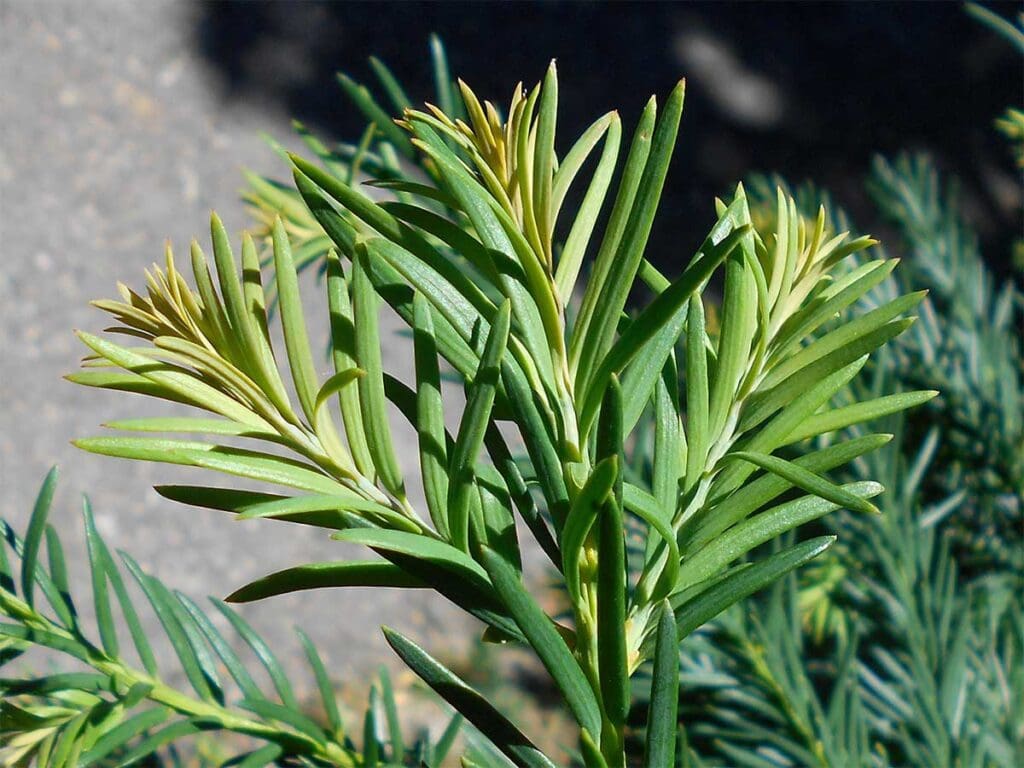
Growing
Yew is a slow growing tree. Plants grown in trays or pots should be thinned and transplanted to allow them enough space to develop. In a seed bed they can be left for the next two growing seasons to provide you with a strong plant for transplanting. Patience is the name of the game with yew!
Planting
Prepare the planting site well by clearing away any weeds or grass and make a hole big enough to accommodate the root ball. Plant carefully in the hole, to the same depth as it was previously, and firm back the soil.

